
Past Presidents

Dr. Richard C. Benson
President, 2016 – 2025
Appointed in July 2016, Dr. Richard C. Benson guided the University through a pivotal era, elevating its research profile and expanding its physical and intellectual footprint. During his tenure, UT Dallas increased its total research expenditures from $113 million to $174 million, while federally-funded research more than doubled. In 2018, the University earned a place in the National Research University Fund, a milestone that underscored its emergence as a major research institution in Texas.
Benson’s leadership also reshaped the campus landscape and cultural identity of UT Dallas. More than 2 million square feet of new construction and landscaping were completed, including major academic buildings and student facilities. He championed the arts through the merger of two schools and the creation of the Harry W. Bass Jr. School of Arts, Humanities, and Technology. The development of the Edith and Peter O’Donnell Jr. Athenaeum, a 12-acre cultural district, marked a significant investment in the University’s artistic and community engagement efforts, with the Crow Museum of Asian Art anchoring its first phase.
Academically, the University experienced record-setting growth. Enrollment surpassed 30,000 students in 2023, a 57% increase over the previous decade, making UT Dallas one of the fastest-growing public doctoral universities in the nation. Graduation rates improved steadily, and the University expanded its athletic and extracurricular offerings, including a transition to NCAA Division II and the rise of a nationally-ranked esports program. UT Dallas also solidified its reputation in collegiate chess, hosting the 2024 President’s Cup and continuing its tradition of excellence in the game.
Fundraising and institutional prestige reached new heights during Benson’s presidency. The New Dimensions campaign raised $416 million toward its $750 million goal, and the University’s endowment grew by more than 92% to a record $840 million. UT Dallas consistently earned recognition as a top value institution from national publications. As Benson departed, he left behind a University transformed—more ambitious, more inclusive and more prepared than ever to shape the future of higher education in Texas and beyond.
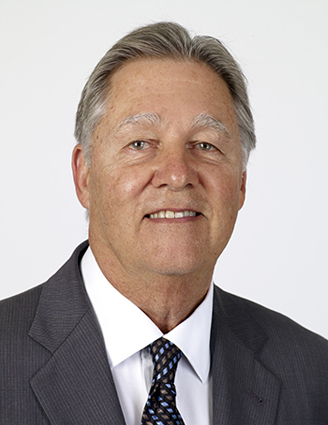
Dr. Hobson Wildenthal
President ad interim, 2015 – 2016
Dr. Hobson Wildenthal graduated with a bachelor’s degree in English and Mathematics from Sul Ross State College in 1958, where his father, Bryan Wildenthal, was president from 1952 to 1965. After earning a PhD in physics in 1964 from the University of Kansas, he held appointments at Rice University, Oak Ridge National Laboratory, Texas A&M University and, for 13 years, Michigan State University. He devoted most of the 20 years of his pre-administrative academic career to experimental and theoretical studies of the structure of atomic nuclei, and to teaching large classes of beginning undergraduate physics students. His research is detailed in more than 200 journals and conference proceedings.
He was elected a Fellow of the American Physical Society in 1973, and has held visiting appointments at Brookhaven and Los Alamos national laboratories, at the University of Munich, at the Max Planck Institute fur Kernphysik in Heidelberg, at the Gesellschaft fur Schwerionenforschung in Darmstadt, at the University of Paris (Orsay), at the Universities of Oxford and Manchester, and at the University of Sao Paulo. He has been awarded both a Senior U.S. Fellowship from Germany’s Alexander von Humboldt Foundation and a Fellowship from the John Simon Guggenheim Memorial Foundation.
Wildenthal moved into administrative roles first as Department Head of Physics and Atmospheric Science at Drexel University and then as Dean of the College of Arts and Sciences at the University of New Mexico. He came to UT Dallas in 1992 as Vice President for Academic Affairs. He was named Provost in 1994 and Executive Vice President in 1999. On May 6, 2015, UT System Chancellor William McRaven appointed Wildenthal ad interim president of the University. Wildenthal’s appointment became effective July 1, 2015.

Dr. David E. Daniel
President, 2005 – 2015
David E. Daniel became the fourth UT Dallas president in 2005, which began a decade of brisk enrollment growth and rising status for the University. Daniel championed the power of strong universities to ensure the state’s prosperity, and a plan he drafted for UT Dallas to attain top-tier research status influenced Texas legislators and a number of other colleges across the state.
Daniel was himself a product of The University of Texas System, having earned his bachelor’s, master’s and doctoral degrees in engineering from The University of Texas at Austin. He joined the UT Austin faculty in 1981. In 1996, he moved to the University of Illinois, where he finished his service as dean of engineering before he was appointed UT Dallas’ president in 2005.
A number of milestones distinguished Daniel’s tenure at UT Dallas. The University’s enrollment grew from about 13,000 to about 23,000 students. The University also added 50 academic programs, tripled research expenditures, and initiated or completed $1 billion worth of construction of new buildings and infrastructure. The average entering SAT score among entering freshmen remained among the highest of any Texas public college or university.
Daniel dedicated UT Dallas to a goal of becoming a Tier One research university. A strategy that he suggested for creating more top-tier research universities in Texas led to two legislative initiatives that pumped more than $600 million of state funds into this effort.
He was in demand nationally for his engineering expertise during his time at UT Dallas. From 2005 through 2008, he led an American Society of Civil Engineers panel that studied the performance of New Orleans’ levees during Hurricane Katrina. In 2010, the National Academy of Engineering and the National Research Council appointed him to a committee investigating the Deepwater Horizon explosion and oil spill in the Gulf of Mexico.
Daniel’s professional work has been recognized by the American Society of Civil Engineers, which awarded him its highest honor for papers published in its journals (the Norman Medal). In 2000, he was elected to the National Academy of Engineering, the nation’s most prestigious organization recognizing engineering achievement.
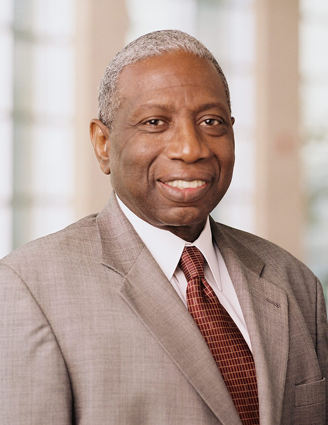
Dr. Franklyn G. Jenifer
President, 1994 – 2005
Franklyn Jenifer became the University’s third president in 1994, and the campus changed as markedly during his 11-year term as it had under predecessors. Under Jenifer, UT Dallas’ enrollment increased, and the campus underwent significant physical changes.
Jenifer came to UT Dallas from Howard University, where he had been president from 1990 to 1994. He was the first graduate of Howard to become its leader, having earned bachelor’s and master’s degrees in microbiology there in 1962 and 1965. He earned a PhD in plant virology from the University of Maryland in 1970.
Jenifer worked with a U.S. Department of Agriculture laboratory in plant virology in Beltsville, Md., and later served as provost at the Rutgers Newark Campus as well as chancellor of the Massachusetts Board of Regents of Higher Education.
By the time Jenifer was named president emeritus of UT Dallas in 2005, the University’s enrollment had grown 61 percent, and the campus had added three major buildings – for the School of Management, the Erik Jonsson School of Engineering and Computer Science, and the Callier Center for Communication Disorders.
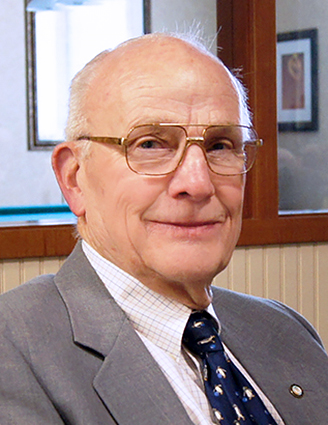
Dr. Robert H. Rutford
President, 1982 – 1994
Dr. Robert H. Rutford, the University’s second president, built on the growth of his predecessor in multiple ways. The University added freshmen and sophomores to its student body and built its first on-campus housing.
Rutford arrived at UT Dallas from the University of Nebraska, where he had gained prominence as one of the nation’s foremost experts on Antarctica. The geologist had made his first of more than 25 trips to the icy continent in 1959, when he was still a graduate student. He earned his doctorate in geology from the University of Minnesota in 1969.
Nebraska appointed him in 1972 to lead an international research project on Antarctica, and in 1975 he became the director of the Division of Polar Programs in the National Science Foundation.
During Rutford’s 12-year tenure as president, UT Dallas began what eventually became the second-largest school at the University, the Erik Jonsson School of Engineering and Computer Science. He stepped down in 1994 and was named to a chaired professorship at UT Dallas.
The National Science Foundation awarded him the Distinguished Service Medal. The 14,688-foot Mount Rutford in Antarctica is named for him, as is the 130-mile-long Rutford Ice Stream. Closer to home, Rutford Avenue, which runs through campus, also bears his name.
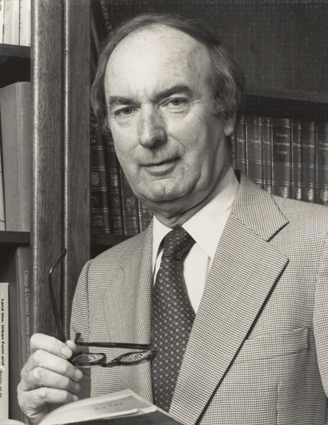
Dr. Alexander L. Clark
Acting President, 1981 – 1982
A man remembered as one of the key architects of the University’s academic and research success was asked to fill the president’s role after President Bryce Jordan stepped down. Dr. Alexander Clark had been with the University since 1974, when he was hired as vice president for academic affairs. He was credited with recruiting more than 130 faculty members during his tenure in that job.
Clark was a native of Johnshaven, Scotland. He earned master’s and doctoral degrees in sociology at Stanford University, where he was a Woodrow Wilson Fellow. He helped launch sociology departments at the University of Washington and UT Austin, where he also taught from 1960 to 1966. An appointment as a Harvard Faculty Fellow in sociology and law followed. Between 1970 and 1974, he was associate dean and later acting dean of the Lyndon B. Johnson School of Public Affairs at UT Austin.
In addition to his year-long stint as acting president, Clark was particularly proud of the talent that he helped bring to UT Dallas. He conducted as many as 550 faculty hiring interviews in 1975 alone. Many of his recruits have stayed to teach and conduct research at the University to the present day.
Clark died in 2009. The Conference Center at UT Dallas was renamed in his honor in 2011.
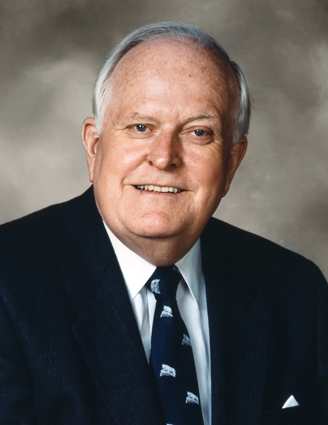
Dr. Henry Bryce Jordan
President, 1971 – 1981
Dr. Henry Bryce Jordan, the first president of UT Dallas, took the helm of an institution that was young but growing rapidly. The University expanded its faculty from 50 to 215 and increased student enrollment from 40 to more than 7,000 during his tenure.
Jordan was raised in Abilene, Texas. He earned bachelor’s and master’s degrees in music from the University of Texas at Austin before receiving a PhD in historical musicology from the University of North Carolina at Chapel Hill in 1956.
He was a professor of music at the University of Maryland and later at the University of Kentucky before leaving to become chairman of the Department of Music at UT Austin in 1965. He was vice president for student affairs and later president ad interim at UT Austin from 1968 to 1970.
UT Dallas began accepting juniors and seniors under Jordan’s term, and he awarded the first bachelor’s degree at spring commencement in 1976. Among his many other UT Dallas legacies was his creation of the University’s logo. That logo, made up of the letters “UTD” with a box around them, remains in use. He also chose the University’s colors – orange and green.
When Jordan left UT Dallas in 1981, it was to return to Austin to serve as executive vice chancellor and chief operating officer for academic affairs of the UT System. He was appointed president of Penn State University in 1983, an office he held for 14 years.
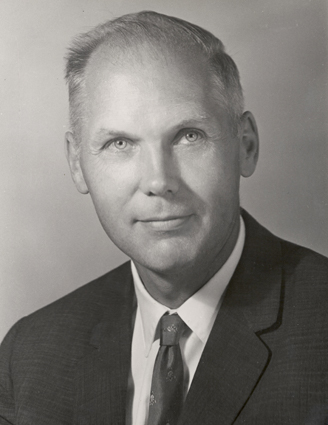
Dr. Francis S. Johnson
Acting President, 1969 – 1971
UT Dallas turned to one of its own to run the campus in its first months as a University. Professor Francis S. Johnson was a rocketry and space science researcher who had been working with the institution from almost the beginning. He had been the leader of the Earth and Planetary Sciences Laboratory at the Southwest Center for Advanced Studies (SCAS) when he was appointed acting president of UT Dallas in 1969.
Johnson’s involvement with rockets went back to the 1940s, when he got a job after the war test-firing V2 missiles captured from the Nazis. He had been a weather operator for the U.S. Air Force in WWII and was awarded the Bronze Star. He earned a PhD in meteorology from the University of California, Los Angeles, in 1958.
He was the manager of space physics for Lockheed when a recruiter working for Lloyd V. Berkner asked whether he would be willing to talk about moving to the then-new the Graduate Research Center of the Southwest (GRCSW), the predecessor to UT Dallas. Berkner’s vision sold him on the project. He had also known TI and UT Dallas co-founder Cecil Green. He quit his job at Lockheed and moved to Texas.
Johnson was acting president of UT Dallas through July 1971. He stayed on at the University afterward as executive dean of graduate studies. Apart from the University, he was a one-time assistant director of the National Science Foundation.
He was an expert on the Earth’s upper atmosphere and was asked by NASA to devise a way to detect the existence of a lunar atmosphere in preparation for the first manned flight to the moon in 1969. The instrument he invented flew on Apollo Flights 12, 14 and 15 and was used by astronauts on the lunar surface. Johnson died in 2009.
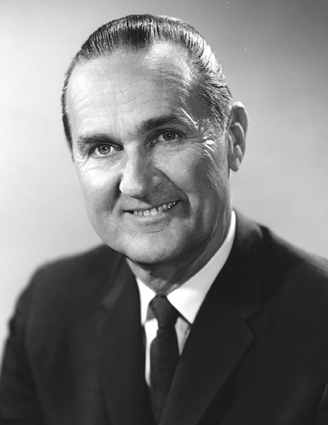
Gifford K. Johnson
President of the Southwest Center for Advanced Studies, 1965 – 1969
The second president of the Graduate Research Center of the Southwest (GRCSW) was instrumental in transforming the research institution into The University of Texas at Dallas. When he was hired in 1965, Gifford K. Johnson had been an executive in the aeronautics industry with a deep interest in higher education and its potential to change communities.
Johnson was a graduate of the University of California, Los Angeles and Harvard Business School. His introduction to aeronautics came in 1935, when the Santa Barbara native got a job working at North American Aviation in Los Angeles. Johnson was later hired as president of Chance Vought Aircraft in Dallas in 1960 and remained president when the company later merged to become Ling Temco Vought.
Johnson was appointed general chairman of a Dallas Chamber of Commerce committee that helped launch the Dallas County Community College District. He also helped establish the Texas Higher Education Coordinating Board.
In 1967, GRCSW changed its name to the Southwest Center for Advanced Studies (SCAS). The research facility had grown in size and reputation but needed more funding to prosper, so in 1968 Johnson presented an idea to University of Texas System Chancellor Harry Ransom. The UT System would absorb SCAS as a university with a focus on graduate education in the sciences. The University of Texas at Dallas was born in 1969.
Johnson retained close ties to UT Dallas after his departure in 1969. He was a founding member of the University’s Excellence in Education Foundation, which was created to make annual gifts to UT Dallas, and he served two terms as chairman of the University’s Development Board. Johnson died in 2009.
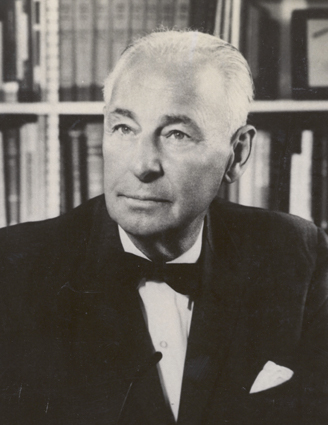
Lloyd V. Berkner
President of the Graduate Research Center of the Southwest, 1961 – 1965
Lloyd V. Berkner brought decades of rigorous engineering and research experience with him when he joined UT Dallas’ predecessor, the Graduate Research Center of the Southwest (GRCSW). The Minnesota-raised engineer and physicist had joined the Texas Instruments board in 1957 and discussed the region’s need for more science and engineering expertise with TI co-founders Cecil H. Green, J. Erik Jonsson and Eugene McDermott. To help fill the talent void, the founders chartered the GRCSW and asked Berkner to be president in 1961. The first offices were on the campus of Southern Methodist University.
Berkner came to the job with a long résumé of engineering experience that dated to his boyhood. As a 14-year-old in Sleepy Eye, Minn., he put together his own amateur radio station and used homemade equipment to help set an early transcontinental radio transmission record. On the way to earning an electrical engineering degree from the University of Minnesota in 1927, he helped establish one of the Twin Cities’ earliest broadcast radio stations.
He was asked to join the first Byrd Antarctic expedition in 1928 as a radio engineer, helping to set up the communication system that made the historic research venture possible. An island named for him in Antarctica commemorates his contribution to the expedition. He later conducted groundbreaking studies on the ionosphere and atmosphere and was instrumental in establishing the International Geophysical Year in 1957-58.
Berkner left the president’s office in 1965 to concentrate on teaching and research, after having presided over the busy first years of establishing the institution that would one day be called UT Dallas. During his tenure, the GRCSW had opened its first structure, the Founders Building, and attracted experts in atmospheric and space sciences. There was also a computer sciences laboratory and a biology division. Berkner died in 1967 and is buried at Arlington National Cemetery. Berkner Hall, which was completed in 1973, is named for him, as is nearby Lloyd V. Berkner High School, in the Richardson Independent School District.